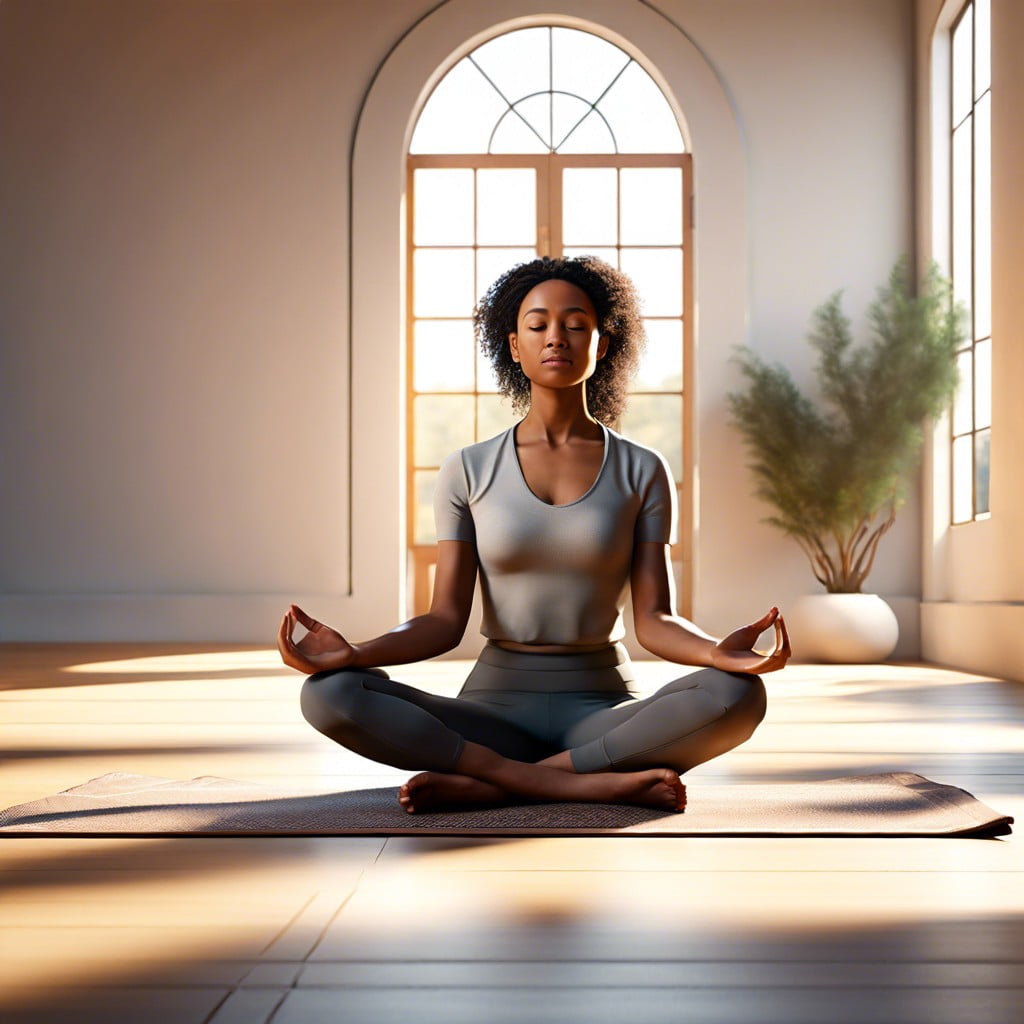Learn practical steps to enhance your meditation practice and maintain focus during your sessions.
Key takeaways:
- The breath serves as an anchor in meditation.
- Find a comfortable posture to eliminate distractions.
- Stay present in the current moment and engage your senses.
- Observe thoughts without judgment or attachment.
- Set an intention to guide your focus and elevate your practice.
The Breath

In meditation, your inhale and exhale serve as natural guides, anchoring you to the present. Feel the cool air entering through your nostrils, filling your lungs, and notice the slightly warmer breeze as you exhale. This rhythmic cycle is like a lighthouse in the foggy chaos of your mind.
Picture your thoughts as boats drifting by. The breath is your anchor, keeping you stable amidst the waves. If your attention sails away, gently maneuver back to the sensation of breathing. With practice, this redirection sharpens focus and fosters inner tranquility.
Counting breaths can be a game-changer for newcomers. Start at one, ascend to ten, then loop back. It’s like counting sheep, but instead of wooing sleep, you’ll be charming awareness. Each breath is a step in your journey to calming the chatter in your mind’s bustling marketplace.
Posture and Comfort
Finding a comfortable seat is the cornerstone of a seamless meditation practice. Your spine should be straight, forming an invisible line from your hips up through the crown of your head. This alignment encourages alertness and facilitates easier breathing.
Choose a cushion or chair that suits your body. If your feet don’t reach the ground when seated, use a footstool or a rolled-up towel for support. The goal is to feel stable and grounded, thus eliminating any distractions from physical discomfort.
Your hands can rest gently on your knees or in your lap, palms up to cultivate receptivity or palms down to promote grounding. Remember, comfort over style—this isn’t a fashion show but a personal journey.
If pins and needles strike, it’s okay to shift positions mindfully. The rule of thumb is to move with intention rather than out of impatience or restlessness. A subtle adjustment can make a significant difference and won’t disqualify the work you’ve already done.
Consider the Goldilocks principle—not too rigid, not too slack. Your posture should be just right, promoting both ease and wakefulness for the mind to flourish.
Awareness of the Present Moment
Attune to the symphony of now: the rustle of leaves, the rhythm of your breath, the dance of shadows across your closed eyelids. This practice nudges you to anchor in the ‘here’ and the ‘now’, letting the past and future quietly slip away like sand through your fingers.
Embrace a playful curiosity about the sensations decorating your experience. The gentle pressure of your seat, the whisper of air against skin, the ebb and flow of thoughts—witness these with the fresh eyes of a child discovering the world for the first time.
Invite your senses to the party. What do you smell? Perhaps the faint scent of rain on concrete or the lingering aroma of morning coffee. What do you hear? Maybe a distant car horn or the hum of an appliance. There’s no need to name these experiences; simply observe them like clouds passing in the sky.
This process is not about emptying the mind—a common myth—but about being fully present and engaged with the immediate experience. Your mind might wander to a grocery list or a work email, and that’s okay. Gently guide it back, as you would a puppy on a leash, to the present moment.
Remember, each moment is fresh and full of potential—like snowflakes, no two are ever alike. Enjoy this sacred space where you simply are. It’s a haven of peace in the hustle of everyday life, a serene lake untouched by the ripples of daily worries. This is the essence of mindfulness.
Observing Thoughts Without Judgment
Picture your mind as a sky where thoughts are passing clouds. As they drift across your consciousness, resist the urge to grab hold and judge them as ‘good’ or ‘bad.’ Instead, give yourself permission to watch them with curiosity, letting them float by.
If judgement sneaks in, acknowledge it with a mental nod and gently guide your attention back to impartial observation, as if you were a silent witness to the procession of your thoughts. This detachment builds mental resilience and clarity.
Keep in mind, it’s akin to training a puppy—patience and persistent redirection are key. Each time you bring your focus back without criticism, you pave the way for tranquility in the midst of mental traffic.
Setting an Intention
As you settle into your meditation practice, infusing it with purpose can transform the experience. Think of intention as a compass; it guides your focus and elevates your practice from routine to a rich journey of self-exploration. Here’s how to incorporate this powerful element.
First, identify what you aspire to cultivate. Is it a sense of calm, gratitude, or perhaps forgiveness? This doesn’t need to be complex—a sincerely felt word or phrase suffices.
Next, hold this intention gently in your heart. Visualize it taking root with each inhale, spreading its branches with every exhale. This visual can ground you, especially if your mind begins to wander.
Remember, this isn’t a target to hit but a direction in which to grow. Allow your practice to ebb and flow around this intention, and you may just find your meditation blooming into something profoundly enriching.